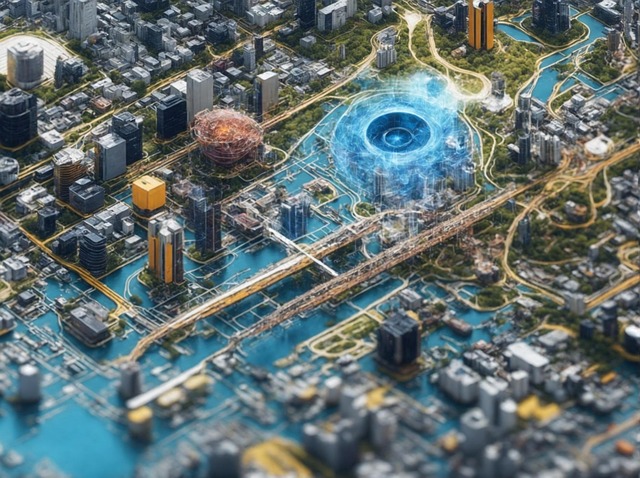The culinary industry is undergoing a significant transformation with the integration of Artificial Intelligence (AI) and robotics, particularly in seafood preparation. AI-driven restaurants leverage advanced algorithms and robotic arms for enhanced efficiency and accuracy. Key benefits include maintaining premium seafood freshness through AI monitoring systems that regulate temperature, humidity, and other factors, preserving ingredient quality. Robots excel in repetitive tasks, reducing human error and speeding up preparation times, allowing chefs to focus on innovation while upholding high food quality standards. AI seafood freshness monitoring systems ensure diners receive the freshest seafood, predict and prevent spoilage, optimize inventory management, minimize waste, and enhance restaurant performance and environmental sustainability. Seafood restaurants are adopting robotic applications to revolutionize kitchen operations and maintain competitive edge in today's culinary scene.
The future of dining is here with AI and robotic innovations transforming the seafood industry. This article explores how advanced technologies, particularly artificial intelligence (AI) and robotics, are revolutionizing seafood preparation, ensuring enhanced freshness, and elevating the overall dining experience. We delve into AI seafood freshness monitoring systems that maintain superior quality, as well as robotic applications streamlining kitchen operations in modern restaurants. Get ready to discover a new era of culinary excellence.
- Revolutionizing Seafood Preparation: The Role of AI and Robotics
- Enhancing Freshness and Quality: AI Seafood Monitoring Systems
- Streamlining the Kitchen: Robotic Applications in Seafood Restaurants
Revolutionizing Seafood Preparation: The Role of AI and Robotics

The integration of Artificial Intelligence (AI) and robotics into the culinary world is reshaping the way we prepare and serve seafood, marking a significant departure from traditional methods. AI seafood restaurants are at the forefront of this revolution, employing sophisticated algorithms and robotic arms to enhance efficiency, accuracy, and most importantly, maintain optimal seafood freshness. These advanced systems can monitor temperature, humidity, and other environmental factors, ensuring each dish is prepared under precise conditions, thereby preserving the natural flavors and textures of the ingredients.
Moreover, AI-driven robots excel in repetitive tasks such as filleting, cutting, and portioning seafood, reducing human error and increasing consistency. This not only speeds up preparation times but also allows chefs to focus on creative aspects, creating innovative dishes that showcase the versatility of seafood. The combination of AI seafood freshness monitoring systems and robotic arms promises a future where dining experiences are enhanced by technology while maintaining the highest standards of food quality.
Enhancing Freshness and Quality: AI Seafood Monitoring Systems

In the realm of culinary innovation, AI seafood freshness monitoring systems are revolutionizing the way seafood is prepared in restaurants. These advanced technologies ensure that diners receive the freshest and highest quality seafood possible. By continuously tracking and analyzing various parameters such as temperature, humidity, and ingredient viability, AI algorithms can predict and prevent spoilage, maintaining optimal conditions throughout the preparation process.
This sophisticated monitoring enables chefs to optimize cooking times and methods, preserving the delicate flavors and textures of each sea creature. Moreover, AI systems can identify patterns in seafood behavior, allowing for precise inventory management and minimizing food waste, a significant benefit both for restaurants’ bottom lines and their environmental footprint.
Streamlining the Kitchen: Robotic Applications in Seafood Restaurants

In today’s culinary landscape, seafood restaurants face constant challenges in maintaining high standards while managing operational efficiency. This is where robotic applications step in as game changers. AI-powered robots are revolutionizing kitchen operations by streamlining various tasks, from intricate food preparation to seamless service. One of the most significant advantages is their ability to enhance seafood freshness monitoring systems. These advanced systems use computer vision and machine learning algorithms to assess the quality of seafood in real time, ensuring only the freshest catches reach customers’ plates.
Robotic arms equipped with sensors can precisely handle and prepare seafood, minimizing human error and cross-contamination risks. They can fillet fish with consistent precision, perform complex cutting techniques, and even create artistic presentations, all while maintaining a consistent level of quality. This not only improves the dining experience but also reduces waste and increases kitchen productivity, allowing staff to focus on more creative aspects of menu development.
The integration of AI and robotics into seafood preparation is transforming the culinary landscape, offering unprecedented levels of efficiency, quality, and consistency. From intelligent monitoring systems that ensure optimal seafood freshness to robots that streamline kitchen operations, these technologies are revolutionizing how we experience marine cuisine. As AI seafood freshness monitoring systems become more sophisticated, restaurants can confidently deliver top-quality dishes, appealing to health-conscious diners seeking sustainable and delicious options. This innovative approach not only enhances the dining experience but also paves the way for a future where robotic applications in seafood kitchens become the norm.
